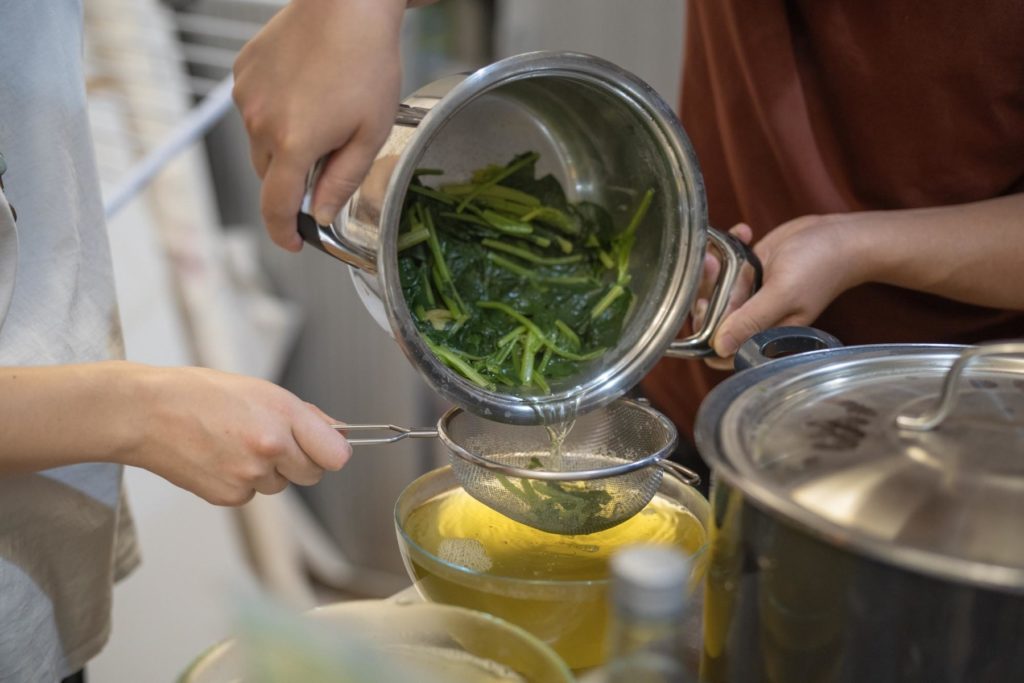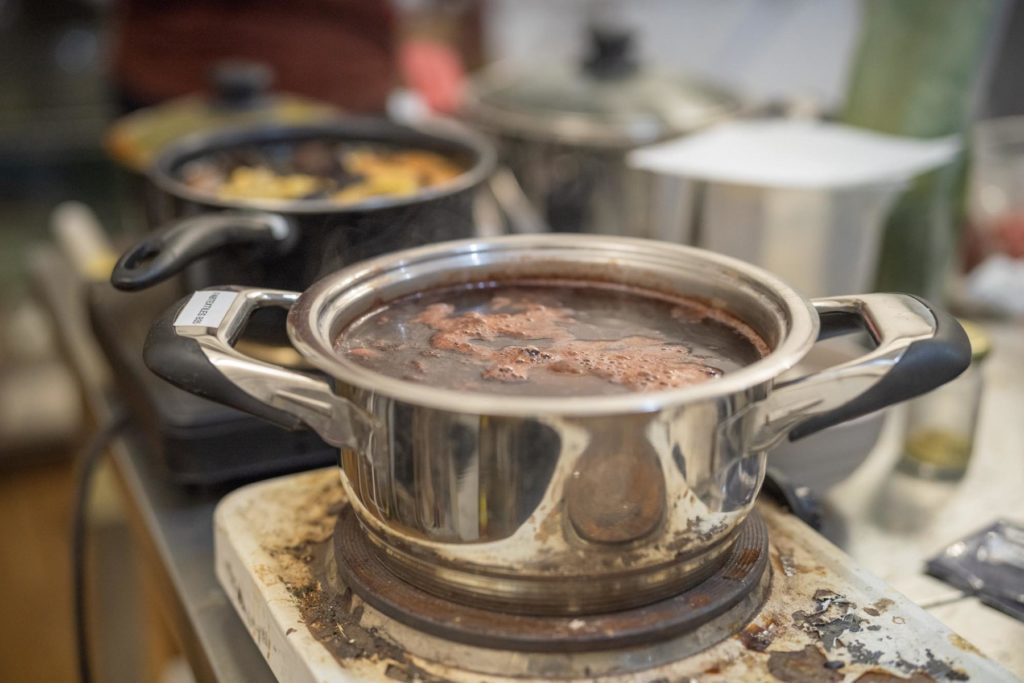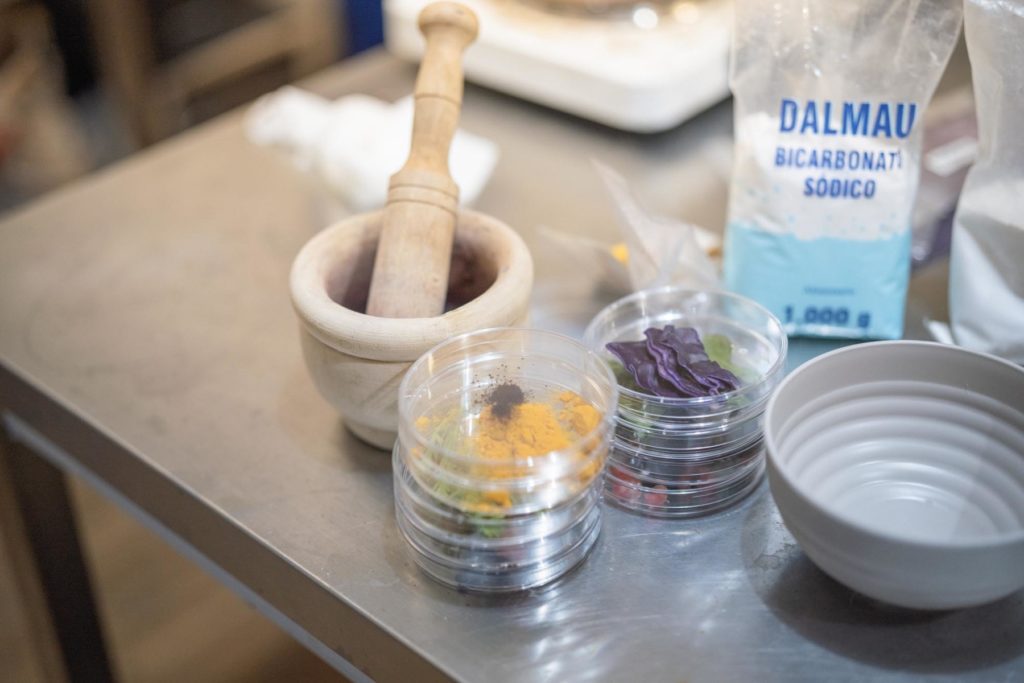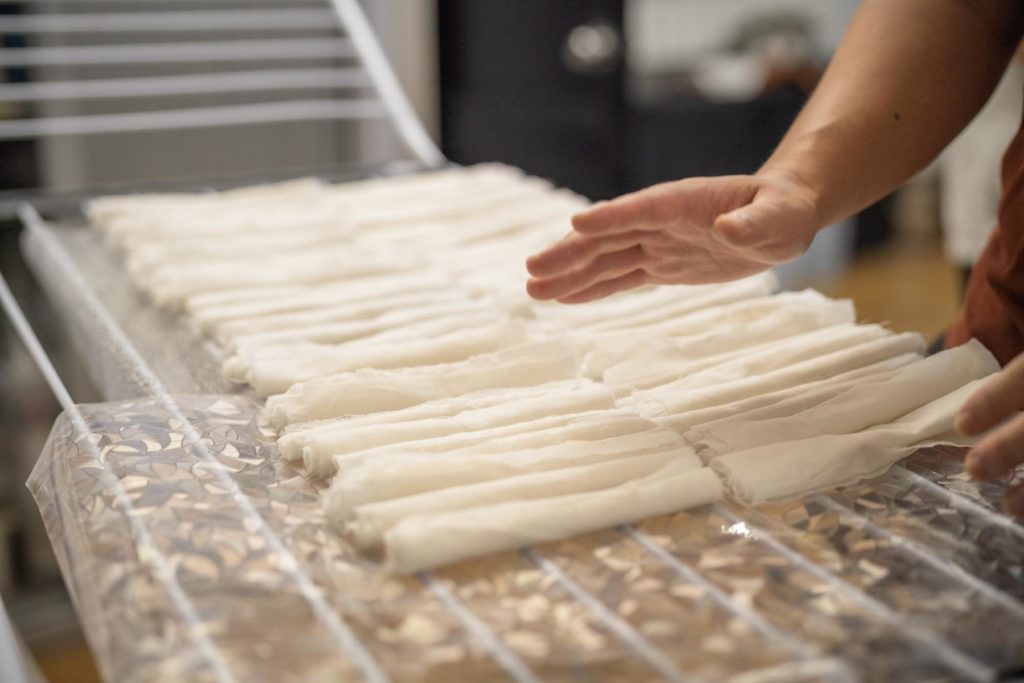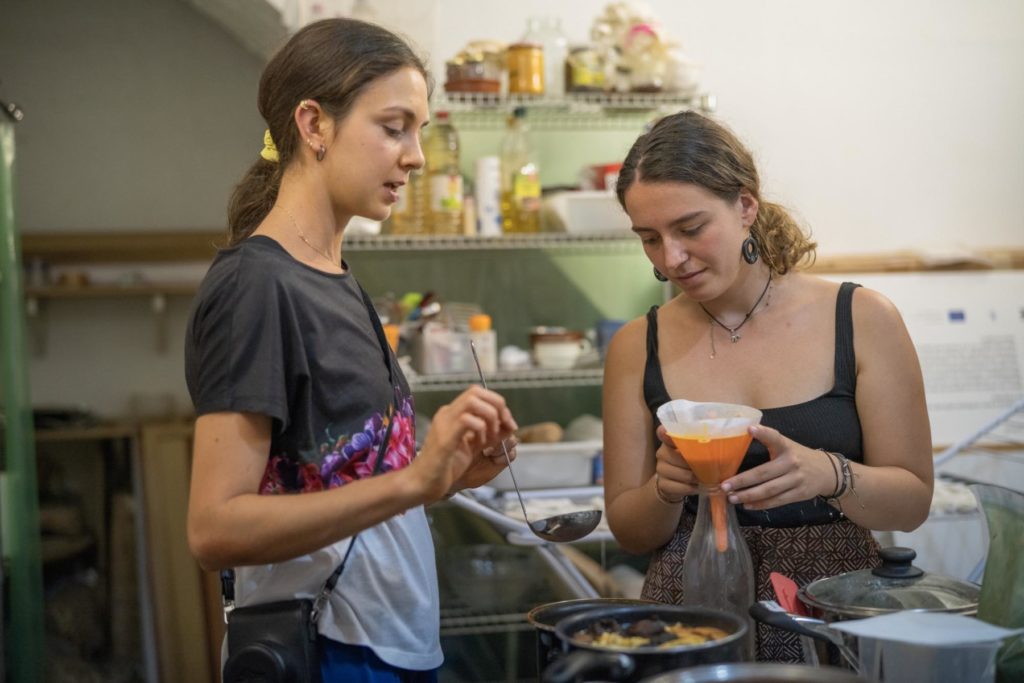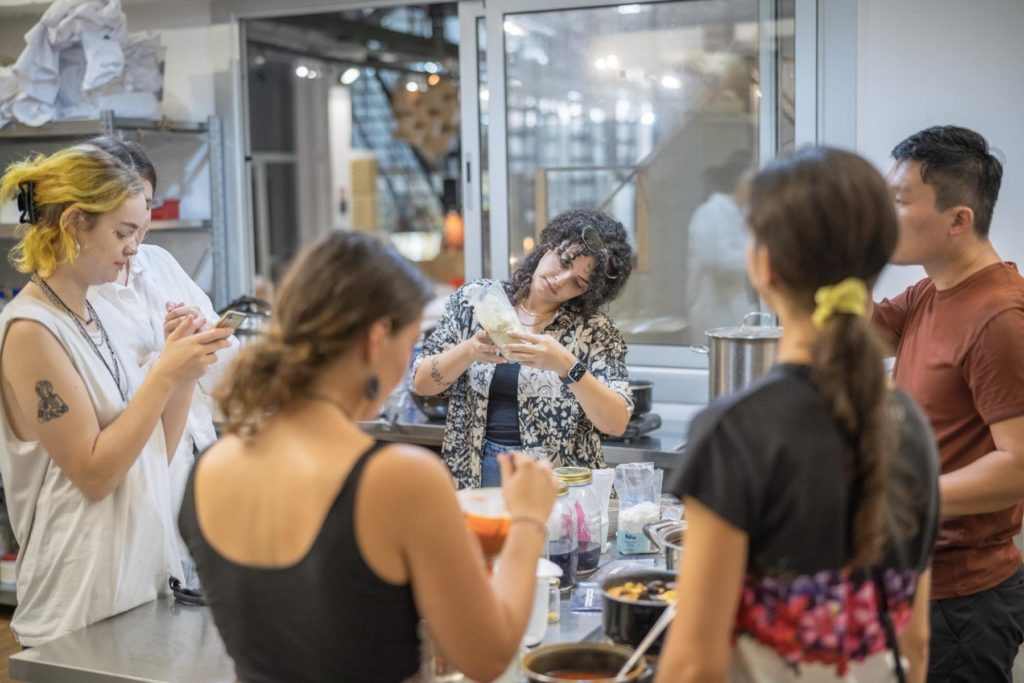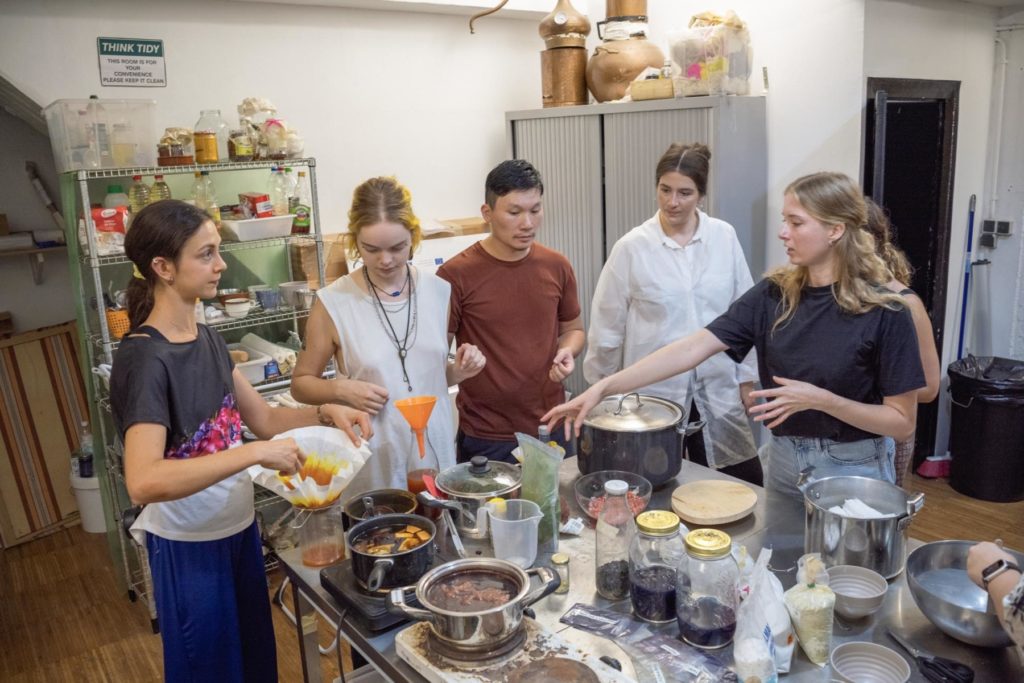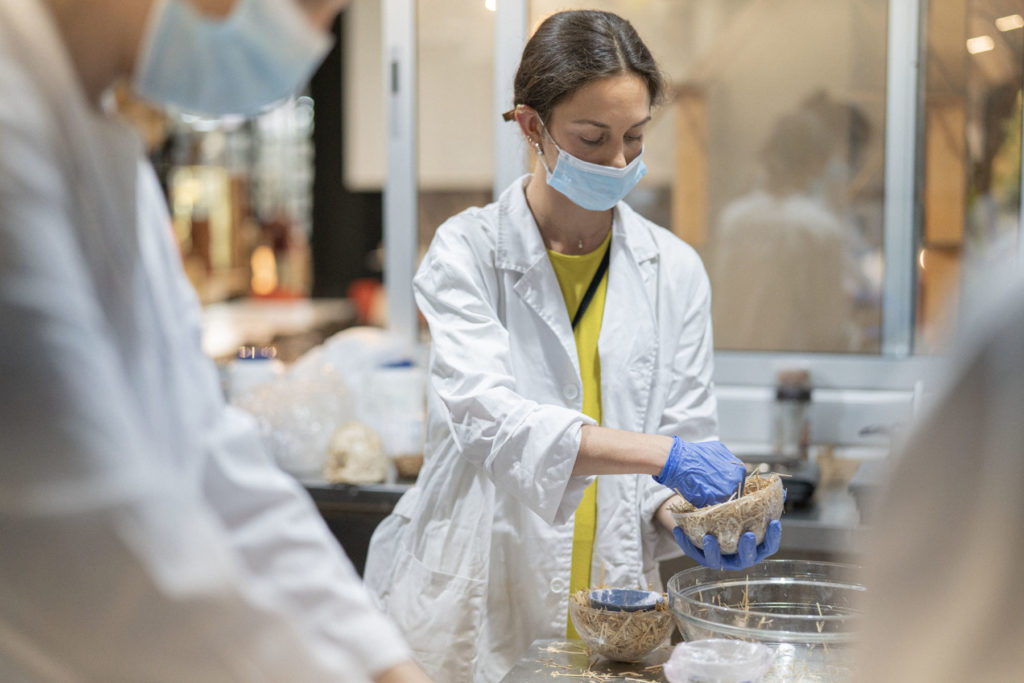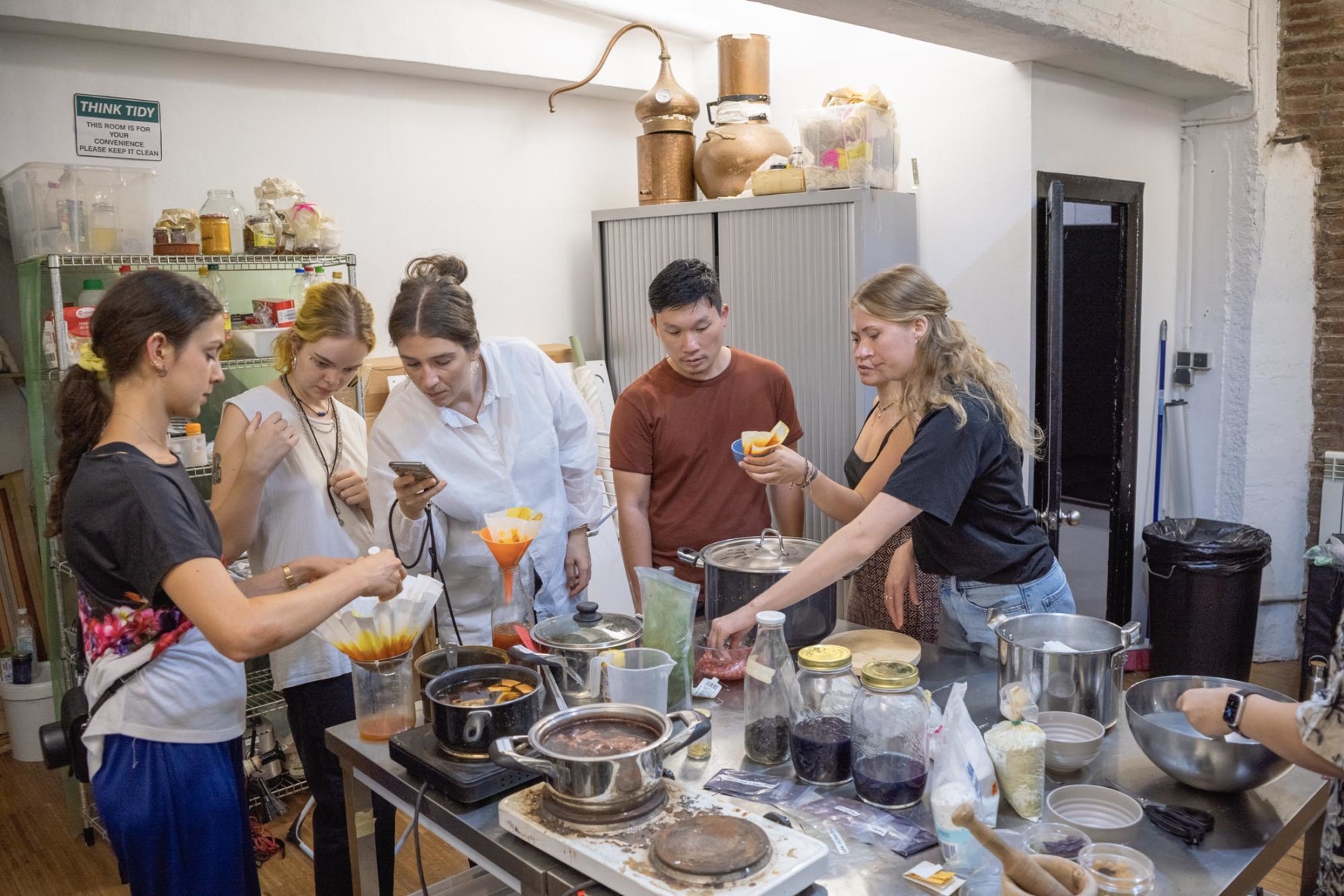
Inside the biolab
Where science and art find a common ground
What is a biolab?
A biolab supports biological experiments on microorganisms such as bacteria, fungi, algae, small plants, or other living organisms, using DIY tools, biohacking or additive manufacturing.
Who is working there?
The biolab in Fab Lab Barcelona is a shared space among educational programs such as Fabricademy, Fab Academy and the Master of Emergent Futures. It enables students to engage in an artistic and scientific study of living organisms, in which they can design the respective environmental conditions themselves and observe the reactions of living organisms.
What are we working on?
In the biolab, we have the ability to explore the use of living organisms to create several biobased materials or textiles. We can investigate biofabrication techniques for creating sustainable and eco-friendly products. Using the biolab tools we can create living artworks, develop prototypes for products or systems inspired by nature or use biomimicry to solve design challenges.
It gives the opportunity to investigate new ways to integrate biological systems into urban or architectural design and to apply design, sustainable and regenerative systems inspired by ecological principles. The biolab also contributes to a growing network of open-source biology projects and encourages collaboration with other DIY biolabs globally through open platforms.
What machines are in the biolab?
It includes an incubator equipped with centrifuges, magnetic stirrers, microscopes or air flow hoods in which the preceding experimental subjects can be subjected to controlled levels of acceleration.
The story of our biolab
The very first biolab at Fab Lab Barcelona was created by Anastasia Pistofidou from Fab Textiles to teach Fabricademy students how to integrate biodesign into the textile and fashion industry. Projects that started from a petri dish have scaled up into wearable objects or research projects applied in the market to rethink our way of creating clothes nowadays.
The current Beta-Biolab has been built upon this manifesto aiming to open its scientific doors to other areas in order to integrate biological systems into food, textiles, urban or architectural design.
The Future of Biodesign
What are we trying to teach our current and future students?
In the Beta-Biolab we are willing to explore the ethical implications of biodesign and synthetic biology in the design field and the maker world. The design projects that are being created engage the public in discussions about the intersection of biology and design. Students are encouraged to use the space to integrate technology and design as to optimize plant growth and resource use to build a symbiotic environment.
A recent projects that has been developed in the Beta-Biolab is the Amass Fabricademy final project by Alve Lagercrantz, a material research project that investigates how bioprinting bacterial cellulose can be used to tackle the root of today’s supply chain problem in fashion. It proposes the creation of a distributed network of designers growing garments straight from raw material to finished product using bio 3D printing.
Another project carried out in the biolab is by Anna Cain who has been working with several interspecies and microorganisms as part of Metamorphocin. In her project she built her own fashion farm in symbiosis with silkworms, new technologies and digital handcraft. The silkworms created their own ecosystem together with DIY hand tools to produce various non-woven textiles or yarns naturally died with bacteria.
On the other hand, in the biolab, experiments with local waste material can be done as well. Such material, for example, are corn husks which can be turned into biomaterial similar to leather or paper. Emma Picanyol has utilized them to create her own biobased material which she then applied in her collection of bags called M collection.
Want to start creating in the biolab?
Discover Fabricademy!
